Motorized blinds aren’t new, but they’ve become more common in homes, especially in busy cities or hot places like Abu Dhabi or Dubai. You press a button, and the blinds open. You schedule them, and they adjust with the sun. But people still get stuck at one point: power. How do these blinds run? Do you plug them in? Do they need charging? That’s where confusion starts.
Some think it’s all batteries. Others want wires. Some want both. The truth is, motorized blinds can be powered in a few ways, and knowing what’s out there makes the decision easier. Especially when fitting them in kitchens, lounges, or big glass-facing windows. Let’s take you through all the possible power options for motorized window blinds in this blog post.
Why Power Source Actually Matters?
A blind that won’t open when you need it is worse than a regular one. The motor needs a reliable power source, not just strong once, but always. That’s why the type of power you choose matters. It decides how long they last, how often you maintain, and how clean the setup looks in your room.
Plus, not all rooms have power outlets nearby. Not every user wants to recharge things. Some want no cords at all. So let’s break down the types of power options for motorized blinds and what fits where.
1. Battery-Powered Motorized Blinds
These are best for rentals, clean installs, and short-term use. Battery-operated blinds are the easiest to install, with no drilling into walls and no wiring. Just attach the blinds, pop in the battery, and you’re good. The motor is compact and sits inside or behind the headrail. Most use lithium-ion rechargeable batteries now. Some older models still run on AA batteries, but they don’t last as long.
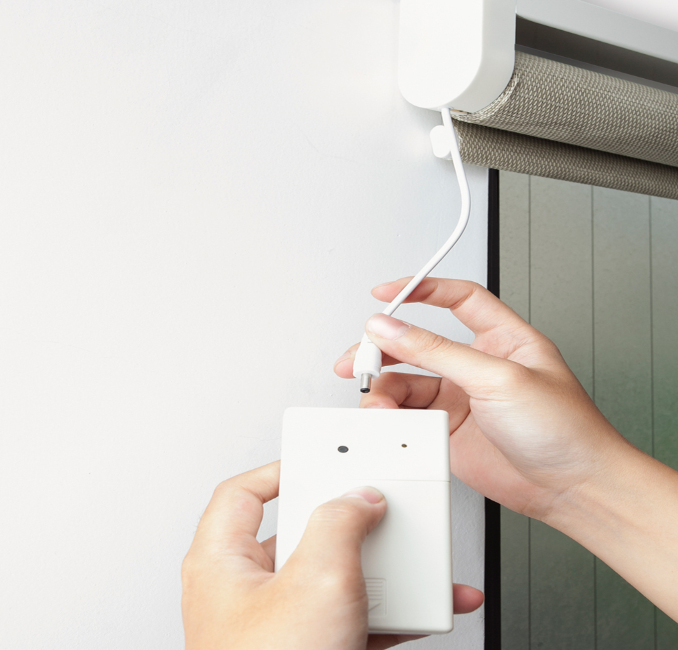
Charging depends on use, but once every 3–6 months is common. These blinds are ideal for apartments, temporary homes, and windows with no nearby outlets. Also, people who don’t want cords can benefit from them. What’s the downside? You have to remember to charge. When they die, blinds stop moving. Also, not great for large or heavy blinds.
2. Plug-in Motorized Blinds (Low Voltage)
These are best for consistent daily use in lived-in spaces because they use a plug that connects to a nearby outlet. The motor stays powered as long as the socket is live, i.e., no charging, no downtime. Just make sure you have a spot near the window.
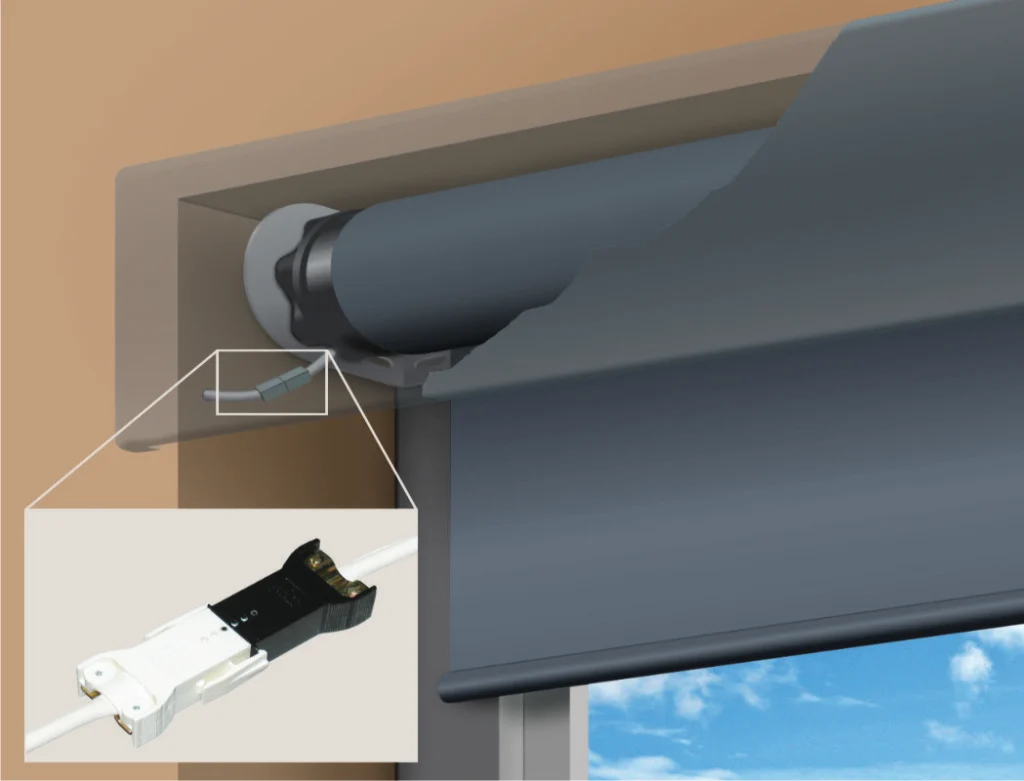
What are the disadvantages? You’ll see wires unless hidden. It might need trunking or a clean layout plan. It’s not ideal for high or isolated windows.
3. Hardwired Motorized Blinds
It’s best for new homes, renovations, and long-term installs. This is the cleanest option, but only if planned ahead. Wires are run inside walls or ceilings during construction or fit-out. No charging, no plugging. Just a direct connection to power, hidden and neat.
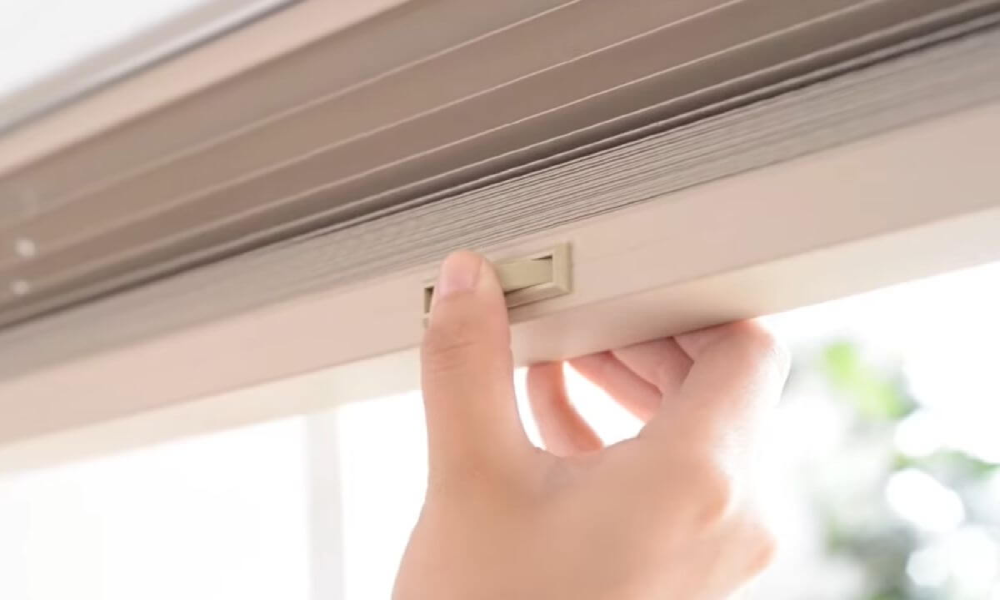
You’ll often see these paired with home automation systems. They can connect to smart hubs, switches, or timers easily. They also handle bigger blinds and heavier fabrics better. It’s good for villas or smart homes, floor-to-ceiling glass, and large spaces with built-in smart tech.
Although you’ll need an electrician for fitting. The cost is higher initially, but it’s worth it in the long run.
4. Solar-Powered Motorized Blinds
These blinds are best for bright windows with limited power access. Yes, solar power works indoors too, as long as you’ve got sunlight. A small solar panel sits on or near the blinds. It catches light and powers a rechargeable battery inside the system.
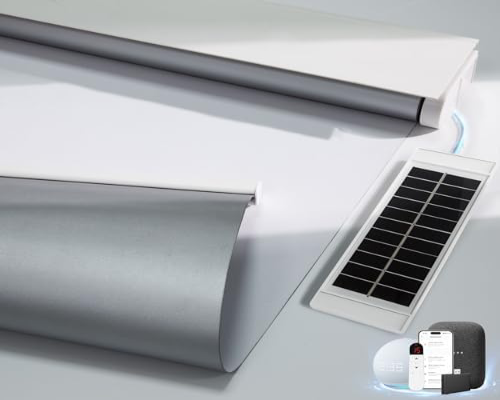
These are often paired with battery motors to extend runtime. You still get backup charge options, but sunlight does most of the work. You should purchase them for green homes, sunny kitchen windows, balconies, or terrace-facing glass.
However, these blinds require consistent sunlight, and they won’t work as well on shaded or north-facing walls.
Which One’s Best for You?
There’s no perfect answer. It depends on the room, the use, and what you’re comfortable maintaining. But, one should try to ask and answer the following questions before purchasing motorized blinds for their homes & commercial spaces.
- Do I have a plug near the window?
- Do I mind recharging every few months?
- Is this a forever home or a short-term setup?
- Do I want to hide wires or make it smart-home ready?
It’s said so because all the possible power options have their perks and downsides such as:
- The battery is good for ease.
- Plug-in is reliable.
- Hardwired is clean and strong.
- Solar is smart, if the light’s good.
Can You Mix Power Options in One Home?
Yes, it’s possible, and many homes have mixed solutions. Bedrooms might use rechargeable batteries, and kitchens can go plug-in. For Lounge areas, you can take advantage of wired blinds. So? There’s no need to stick to one kind.
What Happens When the Power Fails?
Most motors stop mid-way. They don’t break, but they won’t move. Some high-end models have a manual override (a way to pull them manually), while you have to wait until power comes back or the battery is recharged.
Final Words
Motorized blinds are about ease, but only if powered correctly. The motor is only as good as the way it’s fed. Choose what fits the room, not just the style. In Abu Dhabi homes, where sun, heat, and fast-paced life demand quick control, having the right setup matters. Whether it’s plug-in blinds for kitchens or solar blinds for high glass, know your power options. That way, your blinds don’t just look smart; they stay smart, too.
Also Read This: Motorized Blinds vs. Manual Blinds: Which is Right for Your Abu Dhabi Home?
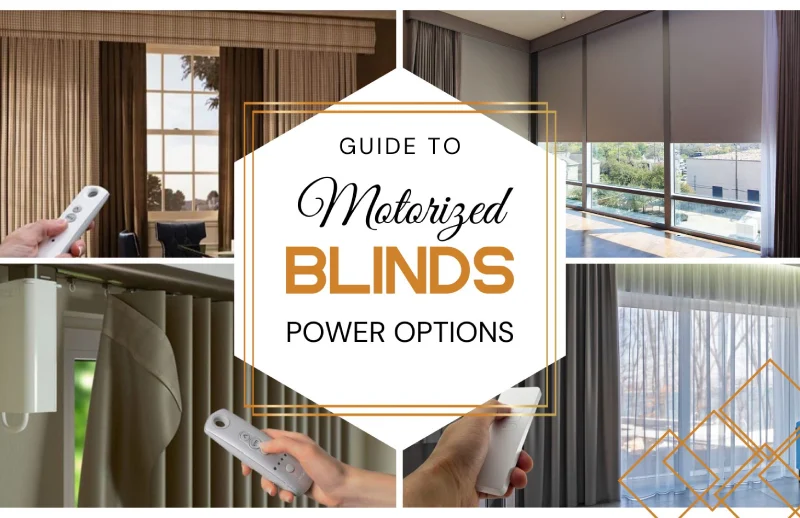


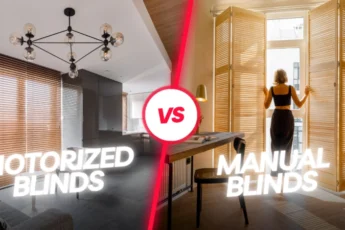
Leave a Comment